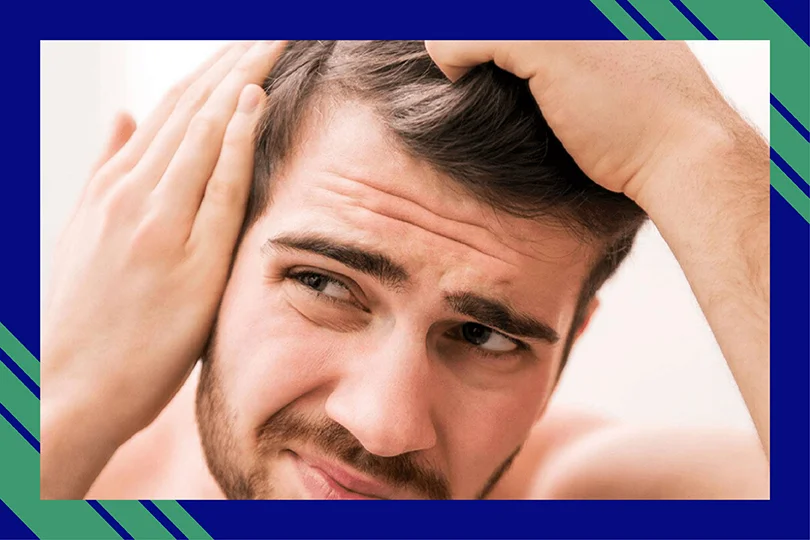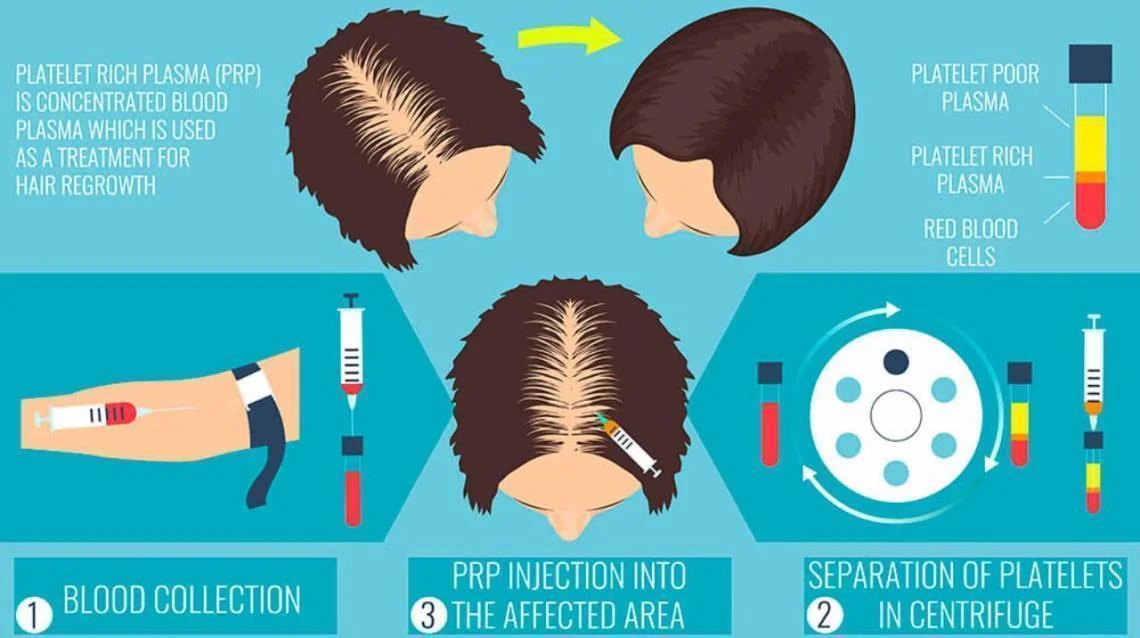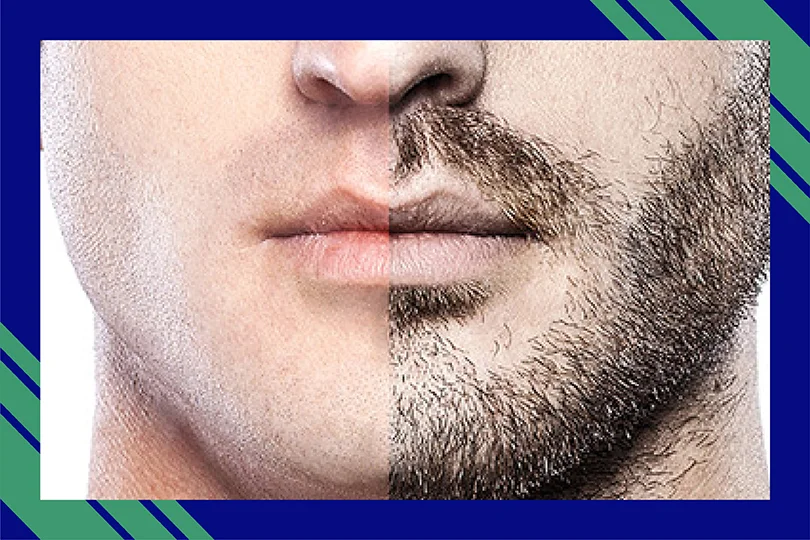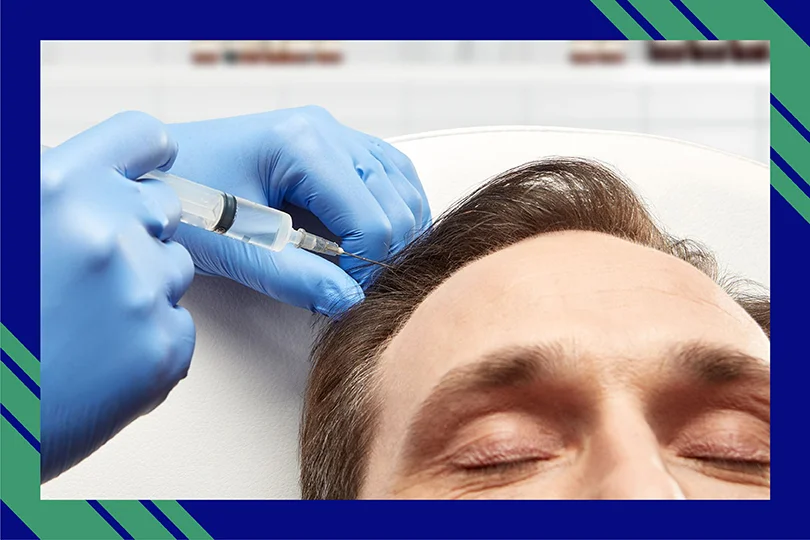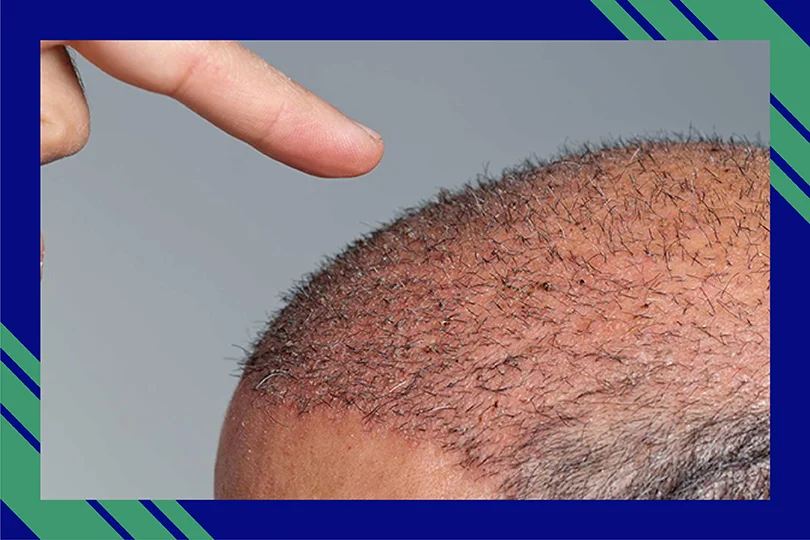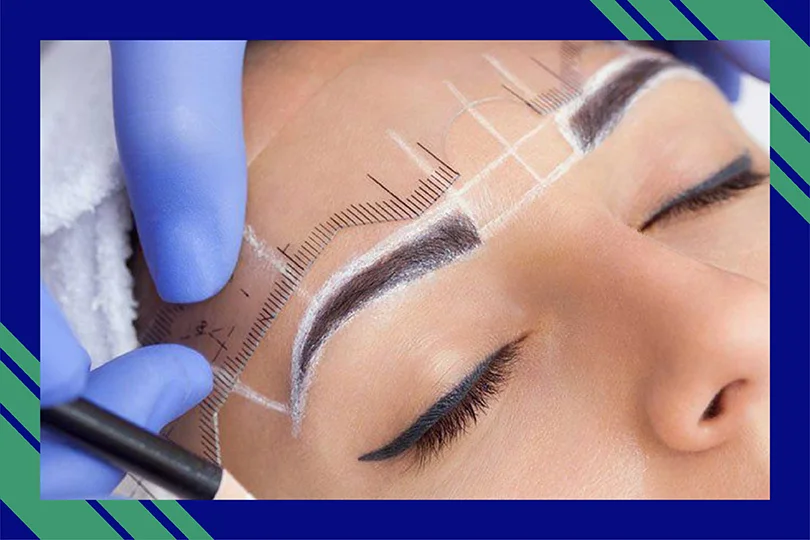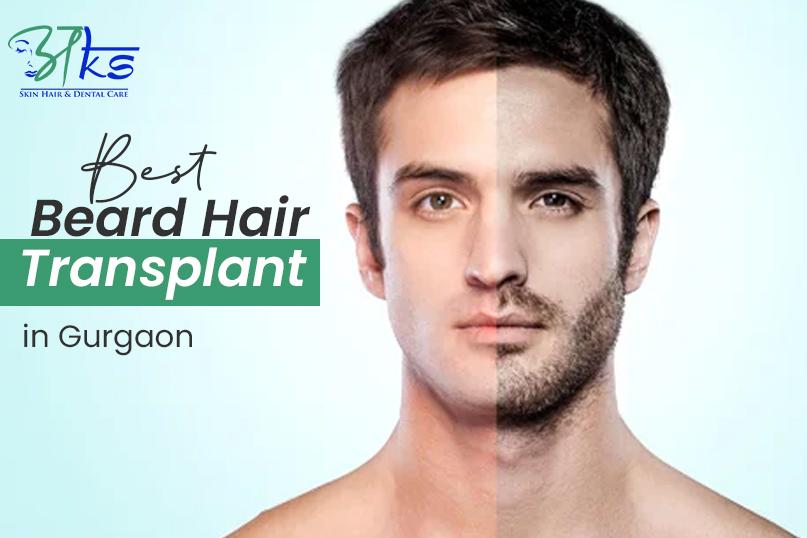Platelet-Rich Plasma Treatment (PRP) – Offered at AKS Clinic by Dr. Akhilendra Singh for high Volume of hairs.
Hair restoration and additional aesthetic plastic surgery operations can benefit from PRP treatments. Platelets, a kind of blood cell, carry growth factors that can stimulate tissue regeneration and promote cell proliferation in the treated area.
Preparation for PRP Therapy: What to Expect
Any prescriptions and over-the-counter medications that the patient is taking should be disclosed to the doctor.
When using medications like aspirin, naproxen, ibuprofen, or blood thinners, it is incredibly vital to follow the doctor instructions. If a doctor has recommended aspirin, the patient should take it, but acetaminophen is fine for a headache.
When PRP is used for hair loss treatment, the patient should rinse their hair and should avoid using any products on the day of treatment. To protect the region, bring a fresh hat to the appointment and wear it after the procedure.
Because PRP therapy includes taking blood, the patient should have a meal before the procedure to avoid feeling lightheaded.
The Methodology
PRP for hair regrowth, like other procedures, is a meticulous procedure that begins with a routine blood draw from the patient arm. “The blood tube is then placed in a machine called a centrifuge, which spins the blood tube to separate the red blood cells from the plasma,” Zeichner says. The platelet-rich plasma is then injected directly into the hair follicles at the level of the scalp.
The treatment is thorough, with injections starting over the scalp and roughly every half inch across the area of losing hair, but it usually takes less than a half-hour.
Following PRP Therapy
For the next 48 hours, the patient should refrain from bathing the treatment region. After that, you can use hair and skin care products as usual and continue to apply topical drugs.
For two or three days after the procedure, the treatment region may be painful, and the patient may notice some bruising. Acetaminophen can help relieve pain. In acute discomfort, the patient should contact the doctors office as soon as possible.
One week following PRP treatment, hair dye or coloring procedures can be resumed.
After at least six months, the effect of the treatment is most visible. It may be required to repeat treatments to maintain the improved hair growth and texture.
Hair Transplants, PRP Therapy, and Hair Loss
Hair transplants are increasingly being supplemented with PRP therapy. PRP can speed up the growth of transplanted hair roots though also strengthening existing hair.
According to recent research, administering PRP to the scalp can help with androgenic alopecia. Complex baldness issues may necessitate four to six months of PRP treatments once a month.
PRP therapy, when used consistently, produces the best outcomes for all patients dealing with hair loss.
Why Has PRP Produced Positive Results in Hair Loss Treatment?
The number of platelets in platelet-rich plasma is roughly five times that of normal blood. These platelets have:
✅ Platelet-derived growth factor (PDGF) is a growth factor produced by platelets.
✅ Transforming growth factor
✅ Insulin-like growth factor 1 (IGF-1)
✅ VEGF (vascular endothelial growth factor) is a type of growth factor found in blood vessels.
✅ Keratinocyte Growth Factor (KGF) is a keratinocyte growth factor.
All of those, as mentioned above, have a good effect on hair development. Platelets promote wound healing and cellular repair, and when injected into the scalp, they appear to repair hair loss. Clinical trials are now being conducted to confirm its efficacy; however, the results will not be available until 2019.
PRP has been shown to stimulate dermal papillae in mice in prior research. A similar study was carried out on mice to see how activated PRP affected hair growth in vivo. The diffuse darkening was observed after one injection every three days for fourteen days compared to mice who were not injected with activated PRP, those who were demonstrated almost complete hair regrowth.
Safety of PRP
PRP for hair loss and the scalp is thought to be relatively safe because of the following reasons:
• PRP therapy is immune-neutral, meaning it poses no risk of allergies, hypersensitivity, or foreign-body reactions.
• PRP preparation and application must be made in a sterile environment at all times. If a patient has an underlying medical condition that makes them susceptible to infection, PRP can be beneficial.
• PRP has a concise duration of inflammation at wound sites, lowering the risk of injection.
Although the use of PRP does not need any FDA approval, the device used to create PRP should be approved by the FDA in the United States. The FDA has not yet approved PRP as a hair restoration drug.
PRP is also utilized in hair restoration on its own, with excellent results. A PRP of patients is injected into the scalp with tiny needles. The growth elements in the blood cells then start working, stimulating hair growth. Both men and women can benefit from this treatment. The final consequence of this treatment is hair that is thicker and healthier in appearance.
Because PRP can be painful and uncomfortable, a topical anesthetic or any cooling spray is frequently employed. Following a procedure, there is almost little downtime, and you should be able to return to work the next day with no visible signs of the PRP injections.
Dr. Akhilendra Singh – Best Medical Expert for Platelet-Rich Plasma Treatment (PRP) in Gurgaon/ Delhi NCR
When it comes to PRP treatment, you can always rely on the services offered by Dr. Akhilendra Singh and the team in Gurgaon/ Delhi NCR which is personally trained by him.

